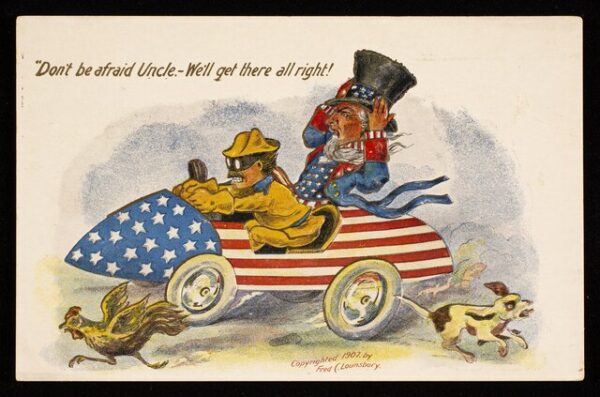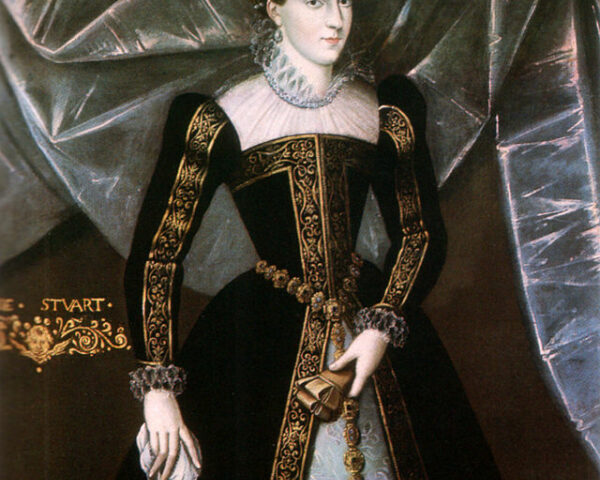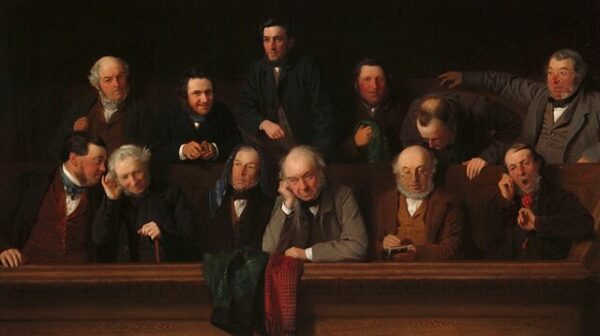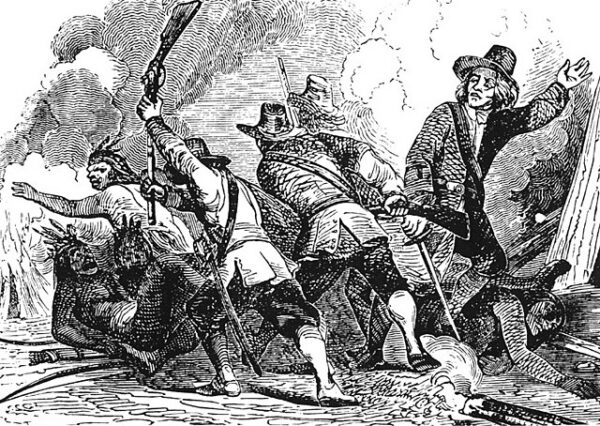On August 22, 1902, Theodore Roosevelt, the 26th President of the United States, made history by becoming the first sitting U.S. president to publicly ride in an automobile. This event was more than just a personal milestone for Roosevelt; it was a symbol of the rapidly changing times and the dawn of a new era in American history.
Roosevelt’s presidency was marked by his vigorous approach to governing and his love for adventure. The ride took place in Hartford, Connecticut, where Roosevelt was visiting to deliver a speech. The vehicle, a Columbia Electric Victoria Phaeton, was a cutting-edge machine for its time, powered by electricity at a time when most automobiles were still experimental and unreliable. This choice of vehicle was in itself significant, reflecting Roosevelt’s forward-thinking nature and his interest in technology and innovation.
The president’s journey through the streets of Hartford was short but monumental. As the car rolled along, it was met with a mix of awe and enthusiasm from onlookers who gathered to witness the spectacle. The sight of their president riding in a car was thrilling for many, symbolizing progress and the embrace of modern technology. It was a moment that underscored Roosevelt’s image as a dynamic leader who was not afraid to embrace the future.
Roosevelt’s embrace of the automobile also reflected broader societal changes. The early 20th century was a time of rapid technological advancement. The automobile, once a novelty, was beginning to revolutionize transportation, promising to reshape cities and change the pace of life. By riding in a car, Roosevelt was endorsing this new mode of transportation, signaling its importance to the American public.
This event also demonstrated Roosevelt’s character. Known for his energy and vigor, he was often described as a man who lived life at full throttle. His willingness to be seen in a car, at a time when many were still skeptical of the safety and reliability of automobiles, was consistent with his image as a man of action and a leader not afraid to take risks.
Roosevelt’s ride can also be seen as a metaphor for his presidency. Just as the automobile represented a break from the past and the promise of a new future, Roosevelt’s presidency was characterized by his willingness to break from tradition and confront the issues of his time head-on. His domestic policies, known collectively as the “Square Deal,” sought to address the social and economic challenges of the day, much like how the automobile sought to overcome the limitations of horse-drawn carriages.
In the broader context of American history, this ride symbolized the intersection of tradition and modernity. It marked a moment when the United States, under Roosevelt’s leadership, was beginning to step into the 20th century with confidence. The automobile, once a curiosity, was becoming a symbol of progress, and Roosevelt’s ride was a clear signal that the nation was moving forward.






